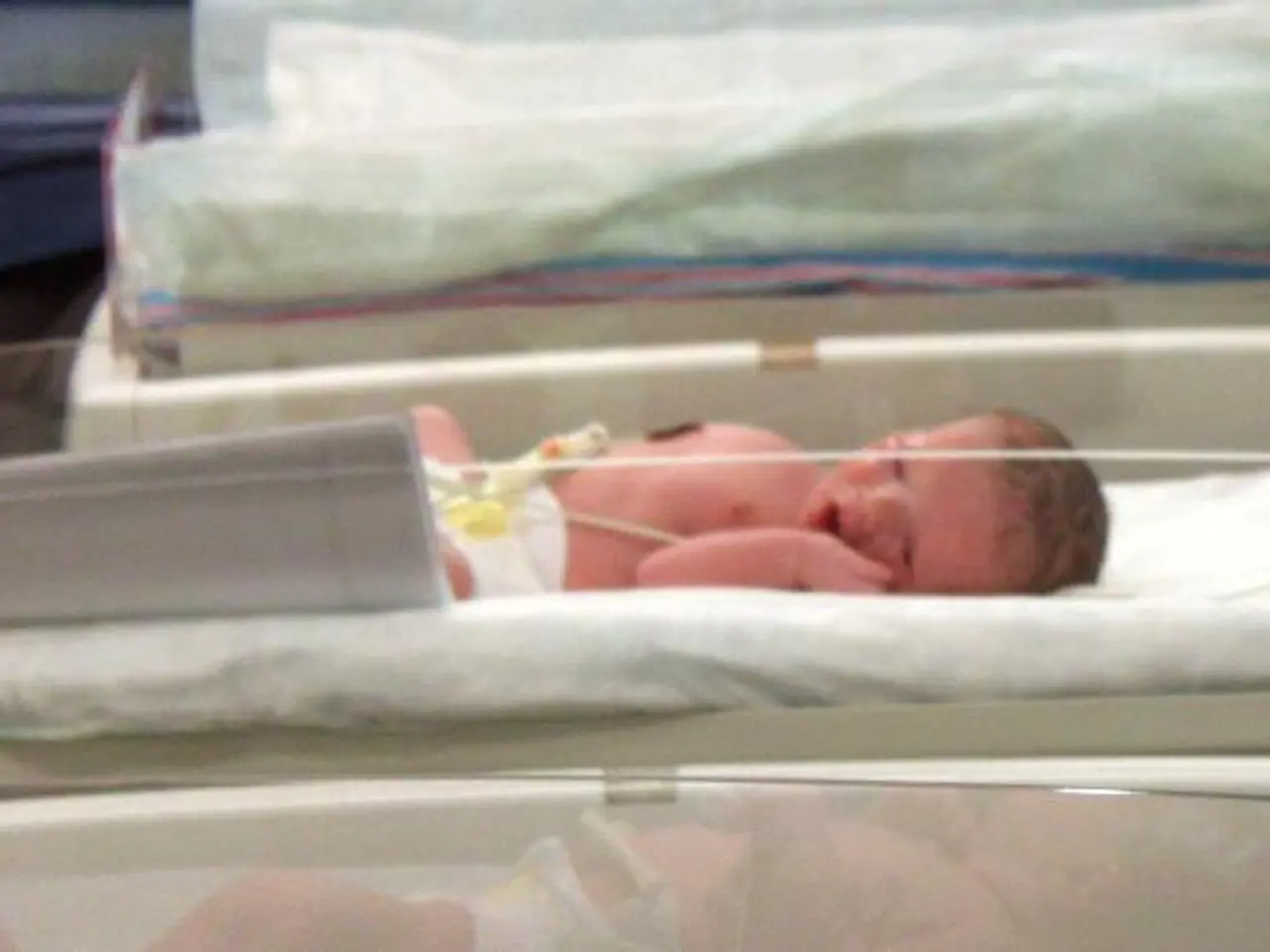Viewing the actual process of embryo transport within fallopian tubes
The fallopian tube, a crucial component of the female reproductive system, has long been a subject of interest in the study of human reproduction. However, the intricate mechanisms governing the movement of embryos within the tube have remained largely elusive. A groundbreaking study led by Shang Wang, an assistant professor in the department of biomedical engineering at Stevens Institute of Technology, has shed new light on this process.
The study reveals a previously unknown mechanism, dubbed the "leaky peristaltic pump," which drives the forward-backward movement of the embryo towards the uterus. This mechanism ensures the embryo develops properly during its journey before reaching the uterus for implantation.
The leaky peristaltic pump operates through a series of muscular contraction waves. These waves originate in the ampula, the region of the fallopian tube where fertilization occurs, and propagate through the isthmus, the section closer to the uterus where embryos develop during preimplantation.
As the contraction wave moves through the fallopian tube, it pushes fluid and the embryo forward. Simultaneously, muscular relaxation at earlier contraction sites creates a suction effect, pulling the embryo backward. This bidirectional or "two steps forward, one step back" movement allows for slow and controlled movement of the embryo towards the uterus while it undergoes critical preimplantation development.
At the turning points of the oviduct, the lumen can become constricted, temporarily halting the backward movement of the embryo, resulting in a net displacement towards the uterus. This contraction wave, fluid movement, and suction process are thought to play an important role in generating mechanical cues that support or regulate cellular activities during preimplantation development.
The findings of this study could lead to better strategies for clinical care of ectopic pregnancy and certain forms of infertility. By understanding the leaky peristaltic pump mechanism, researchers may be able to develop targeted interventions to improve fertility and prevent ectopic pregnancies.
Wang and his colleagues used "optical coherence tomography" (OCT) to peer inside the abdomens of female mice, providing a unique window into embryo movement and the early stage of embryo development inside the fallopian tube. The team implanted a small window made of glass and resin in 12 female mice to bypass the skin and muscle and directly visualize the fallopian tubes. Near-infrared light was shone through the window to penetrate tissues and measure the backscattered light, which was then used to reconstruct detailed 3D images of the sample.
The fallopian tube, also known as the oviduct, is a tubular structure responsible for transporting sperm and eggs, hosting fertilization, and shepherding preimplantation embryos toward the uterus as they develop. The leaky peristaltic pump mechanism is a significant step forward in our understanding of this complex process and could pave the way for future research into reproductive health and fertility.
- The intricate mechanisms of the female reproductive system, including the leaky peristaltic pump, are essential topics in the field of science.
- Supplements and lifestyle changes can impact sleep quality, which in turn influences workplace-wellness and overall health.
- Medical conditions such as chronic kidney disease, COPD, type-2 diabetes, cancer, and other respiratory conditions affect digestive health.
- Eye-health issues can arise from chronic diseases like diabetes, while hearing loss may be associated with aging or certain medical conditions.
- Health and wellness encompass aspects such as fitness and exercise, sexual health, and family health, all integral for a balanced lifestyle.
- Proper care for medical conditions and chronic diseases requires understanding and addressing their underlying causes, including genetic factors, autoimmune disorders, and climate change impact.
- Research on renewable energy can reduce industries' carbon footprint, including manufacturing, which contributes to environmental pollution.
- Mental-health awareness is crucial in addressing issues like stress, depression, and anxiety, often affecting men's health and well-being.
- Skin-care routines and therapies are essential for maintaining good skin health, combating various skin conditions.
- Neurological disorders, such as Alzheimer's disease, multiple sclerosis, migraine, and Parkinson's disease, require continued medical research and treatments.
- finance plays a significant role in medical care, with Medicare and insurance coverage affecting access to therapies and treatments for various health conditions.
- CBD has shown potential in treating a range of medical conditions, including chronic pain, anxiety, and sleep disorders.
- Rheumatoid arthritis and other autoimmune disorders can lead to joint pain and disability, necessitating proper management and care for quality-of-life improvement.
- Nutrition plays a vital role in aging well, supporting cardiovascular health, eye-health, and overall cognitive function.
- Womens-health issues include menopause, polycystic ovary syndrome, and breast cancer, requiring awareness and menopause management for healthier aging.
- Parenting involves managing family health, fostering children's growth, and maintaining balance between family and personal well-being.
- Weight-management is key for maintaining overall health, reducing the risk of chronic diseases like diabetes and heart disease.
- Multiple sclerosis is an autoimmune disorder affecting the central nervous system, requiring management and treatments to improve quality of life.
- Climate change can impact global health, particularly environmental-science, threatening species and ecosystems, and contributing to the spread of infectious diseases.
- The energy sector should embrace renewable-energy sources like solar, wind, and hydroelectric to combat climate change and its impact on health and wellness.
- Aerospace industries can develop solutions for climate change challenges, such as building satellites for monitoring and addressing environmental issues.
- The oil-and-gas industry must adapt to the shift towards renewable-energy alternatives to minimize carbon emissions and reduce the risk of environmental disasters.
- Space-and-astronomy research can provide insights into climate change, offering opportunities for mitigation strategies and fostering a sustainable future.
- Infrastructure investments in renewable-energy sources like solar panels, wind turbines, and energy storage technologies can benefit both the environment and the economy.
- Overall, fostering a holistic approach to health and wellness is essential for supporting a healthy lifestyle, managing various medical conditions, and promoting a sustainable future for all.








